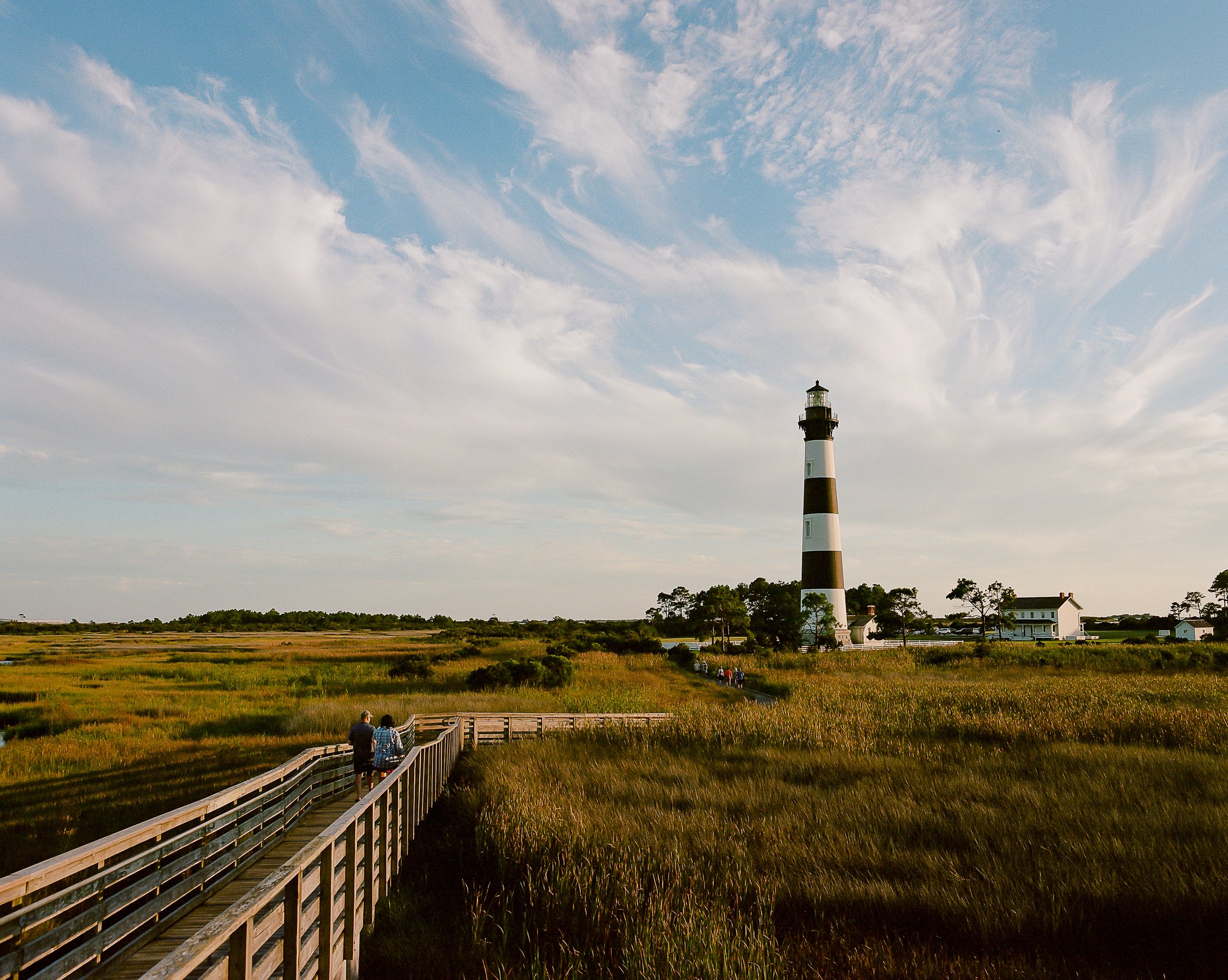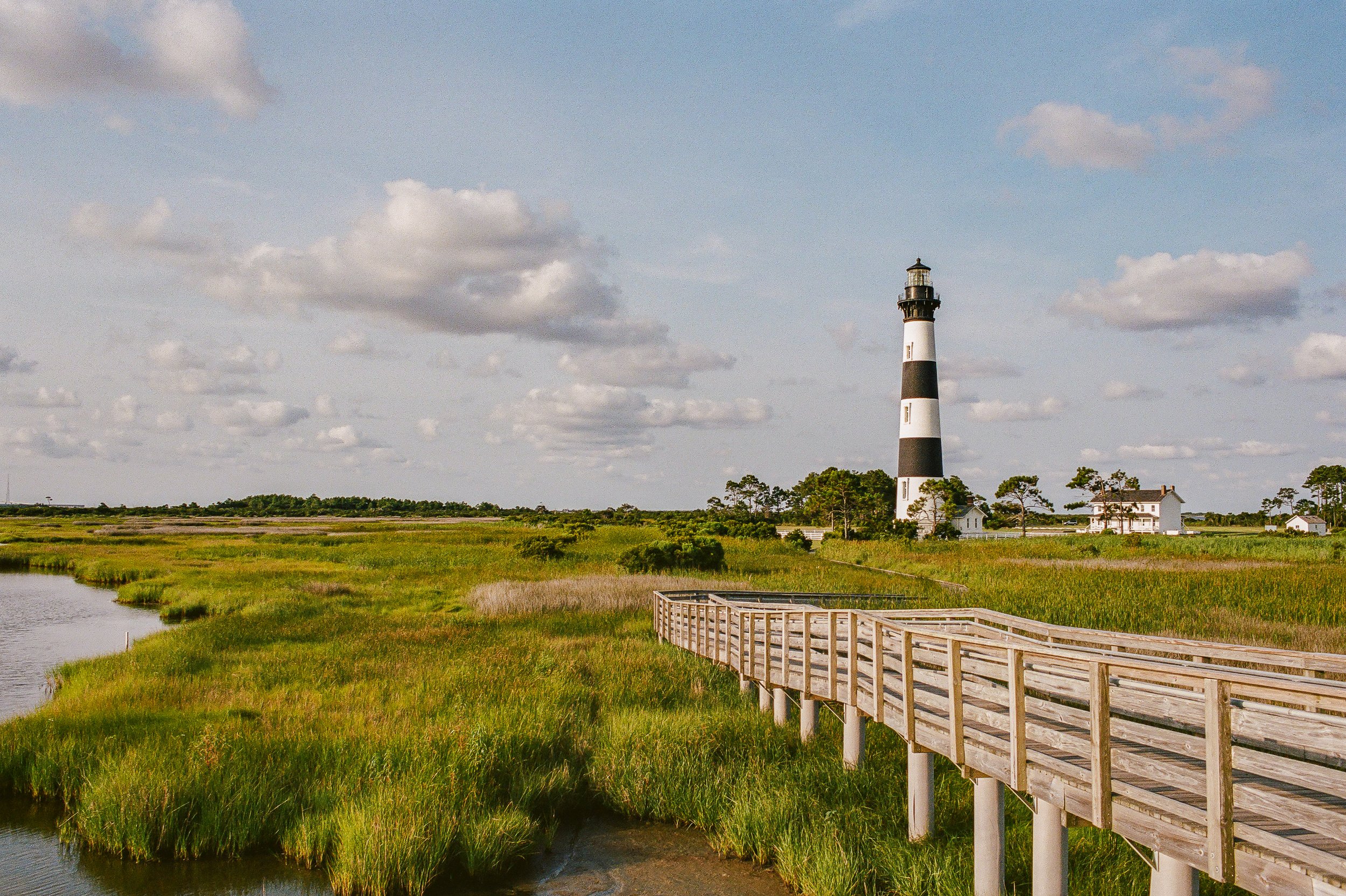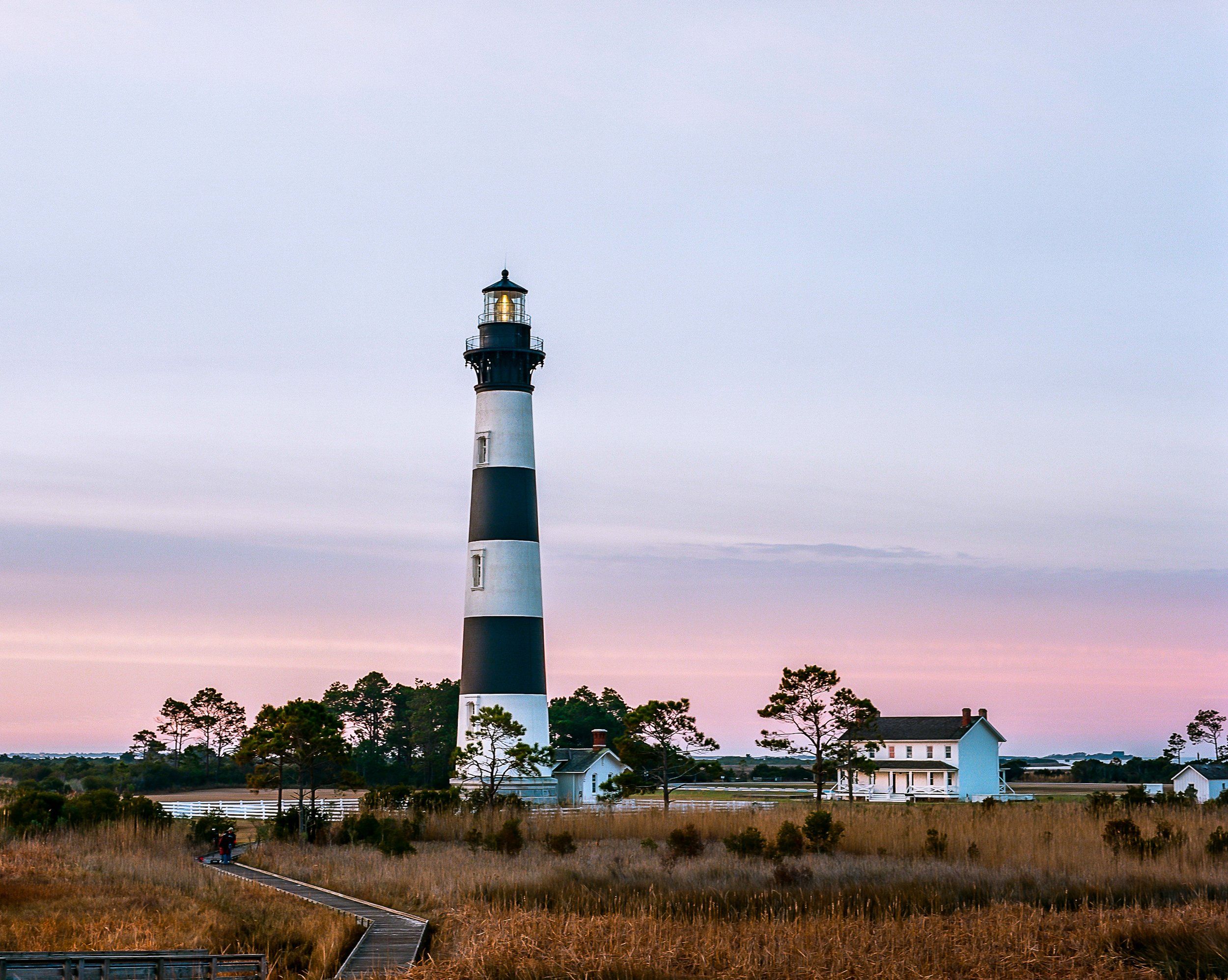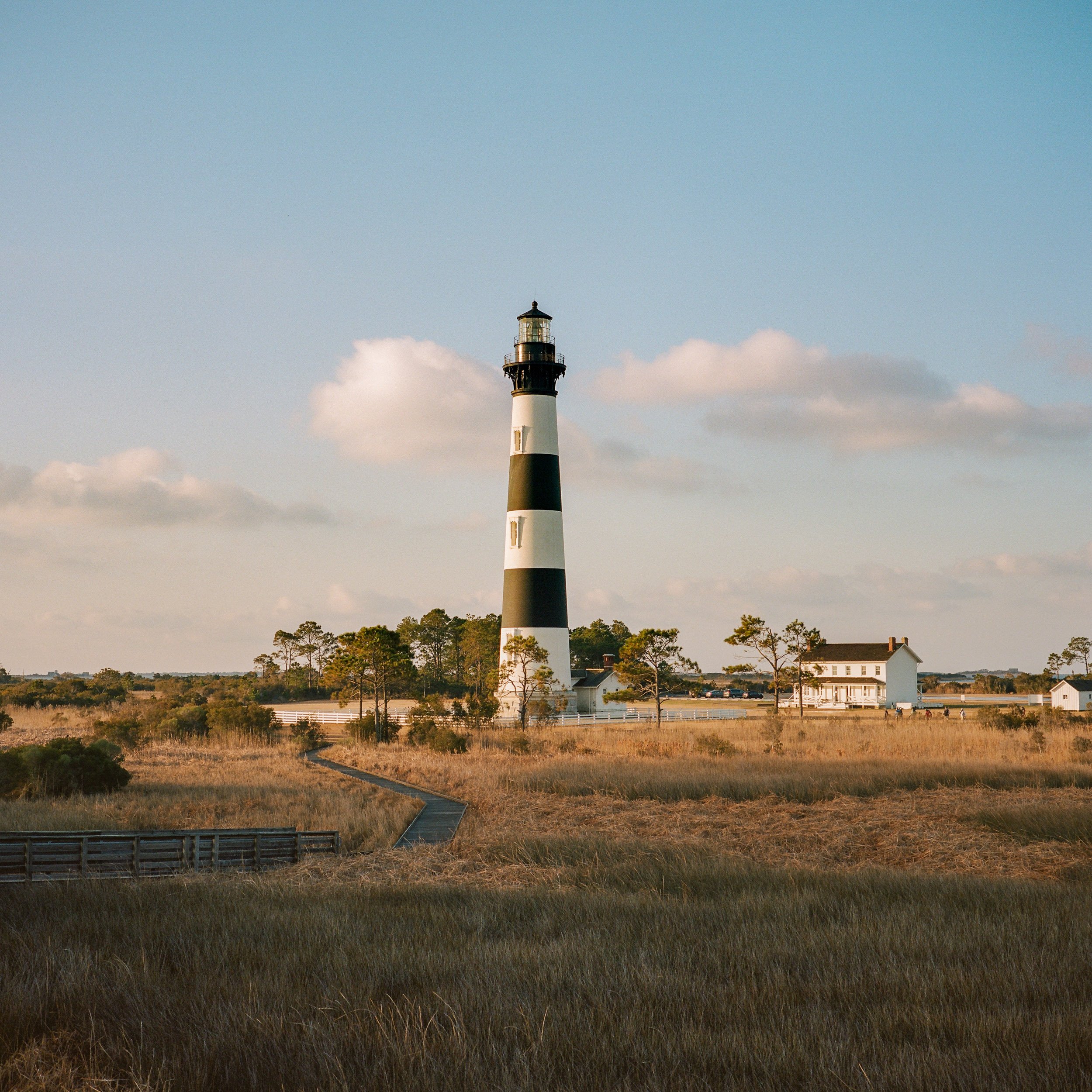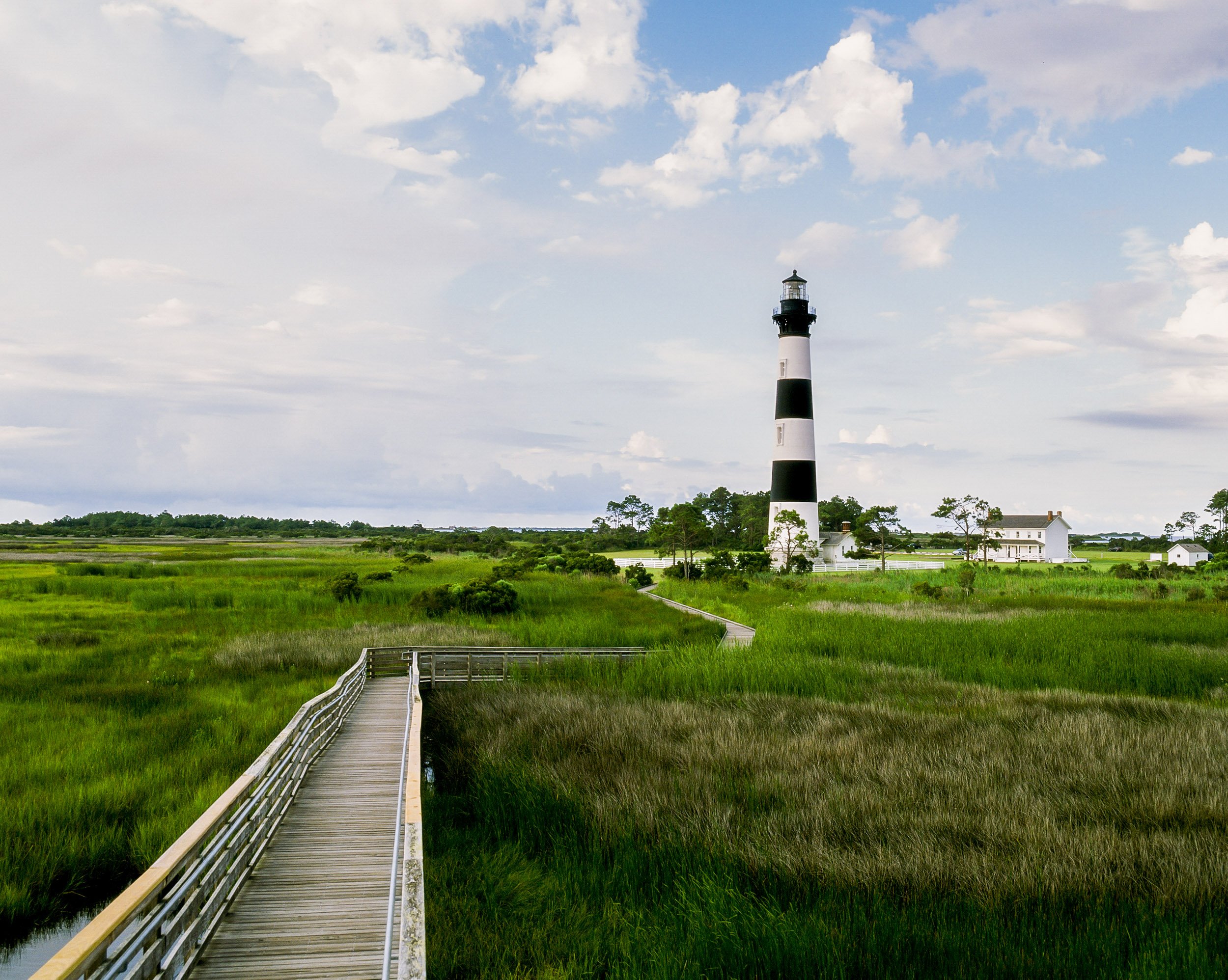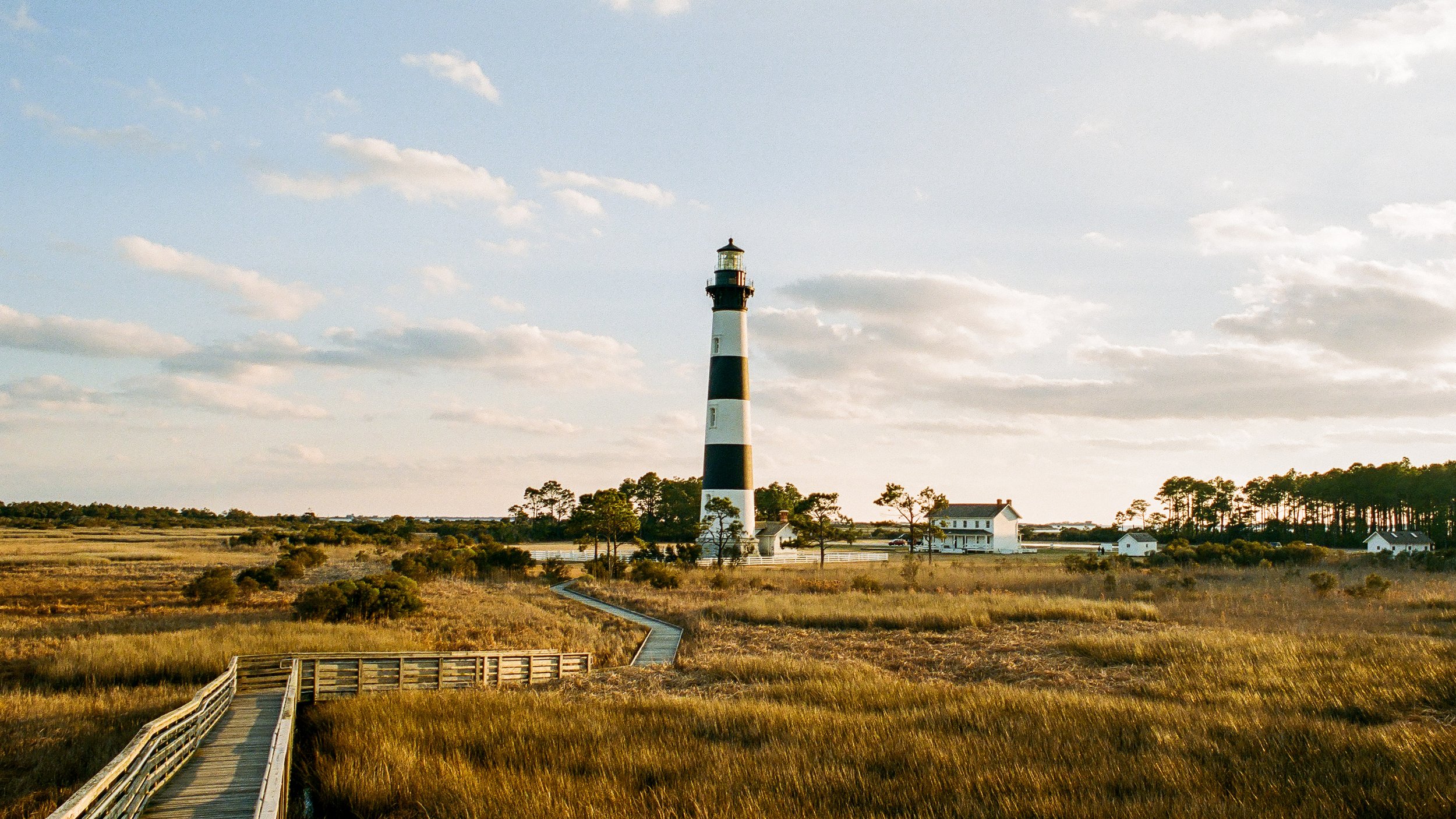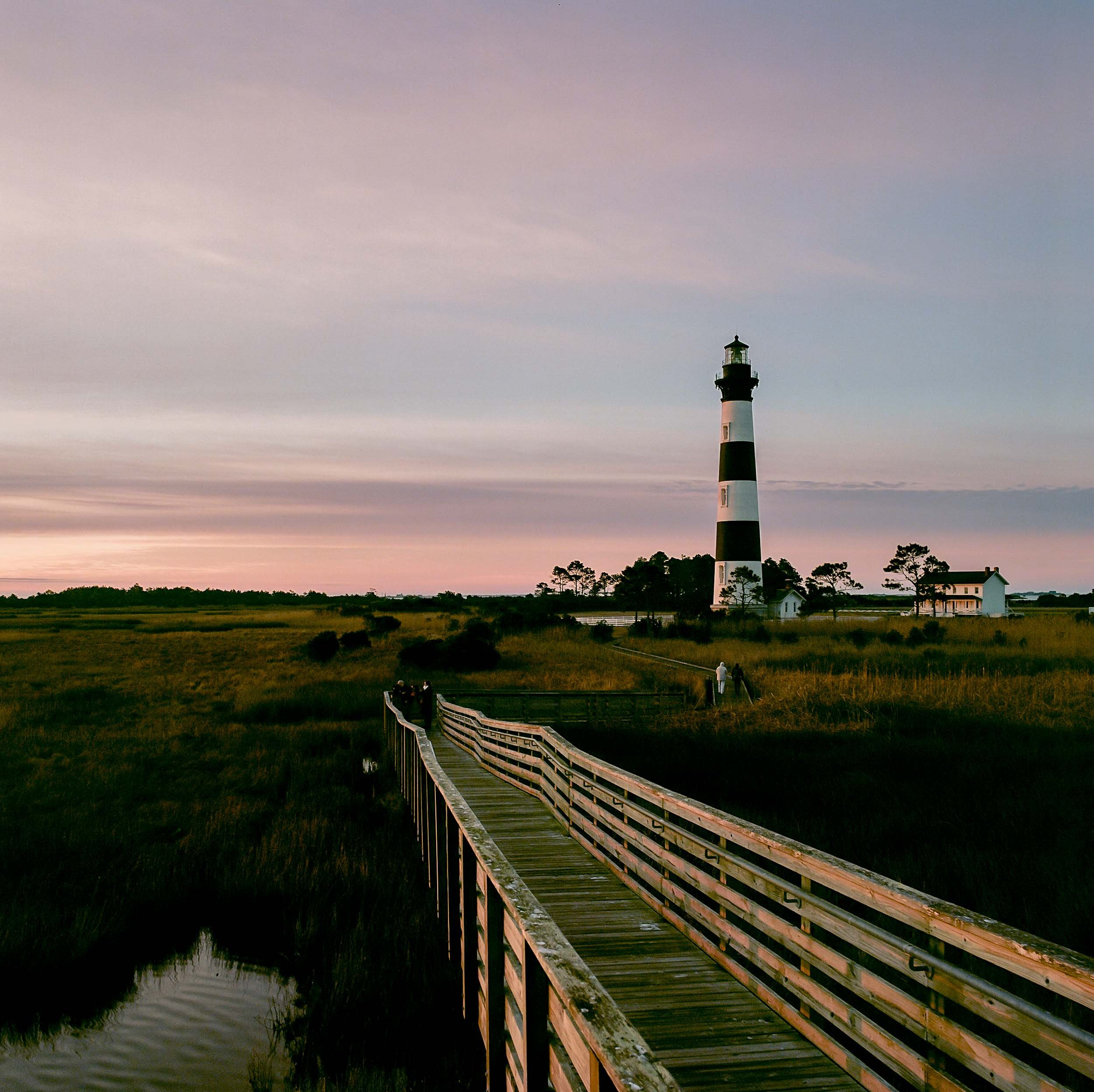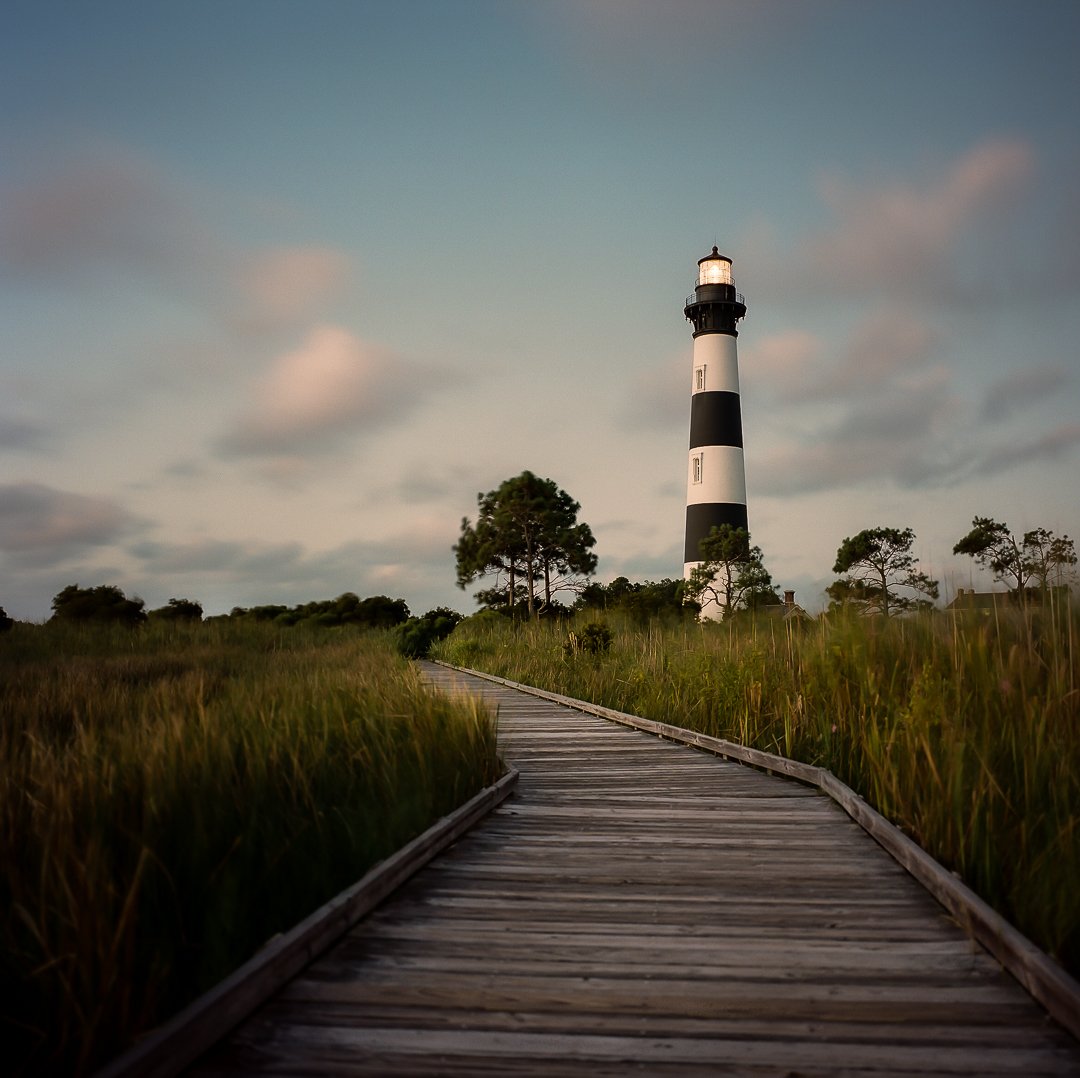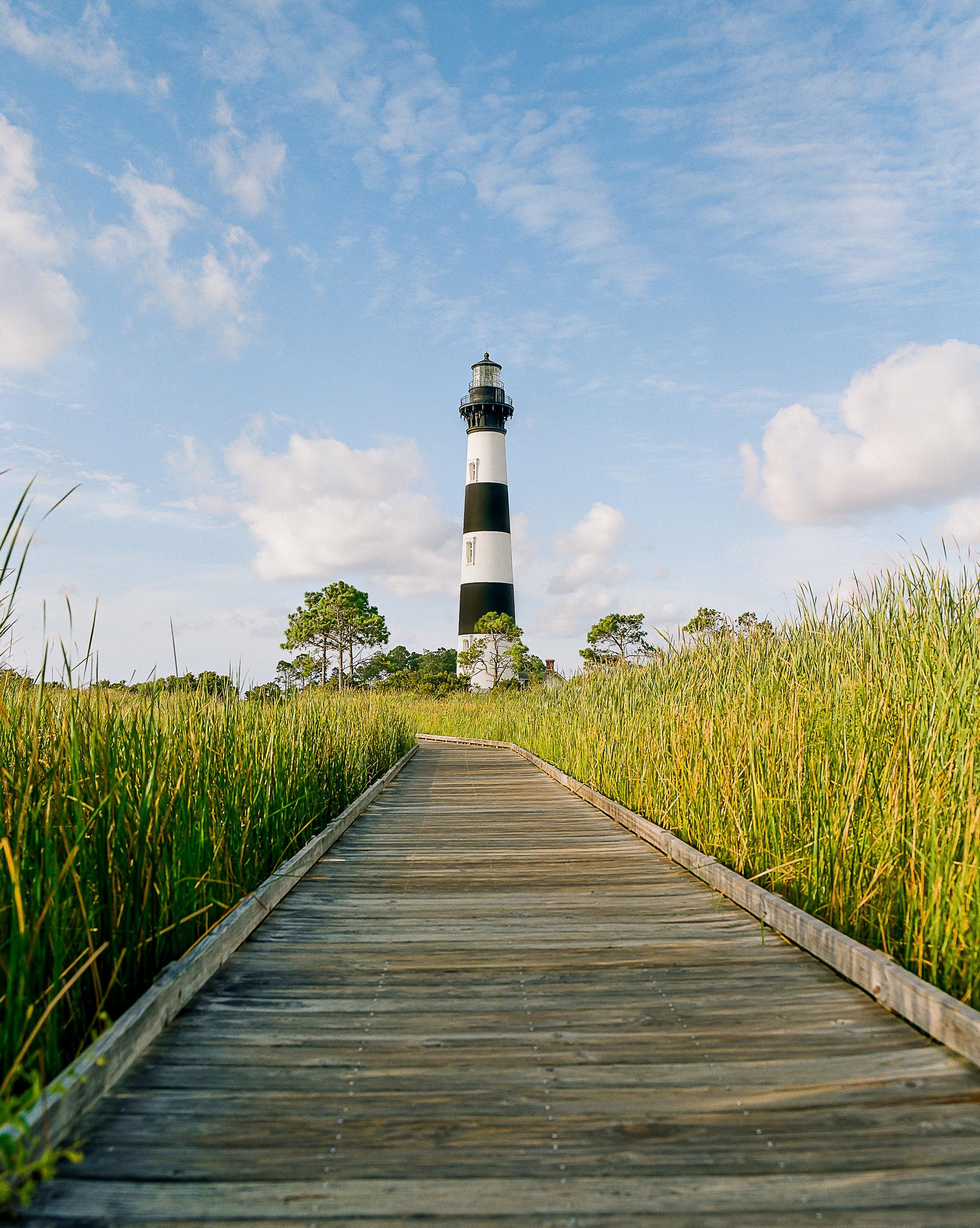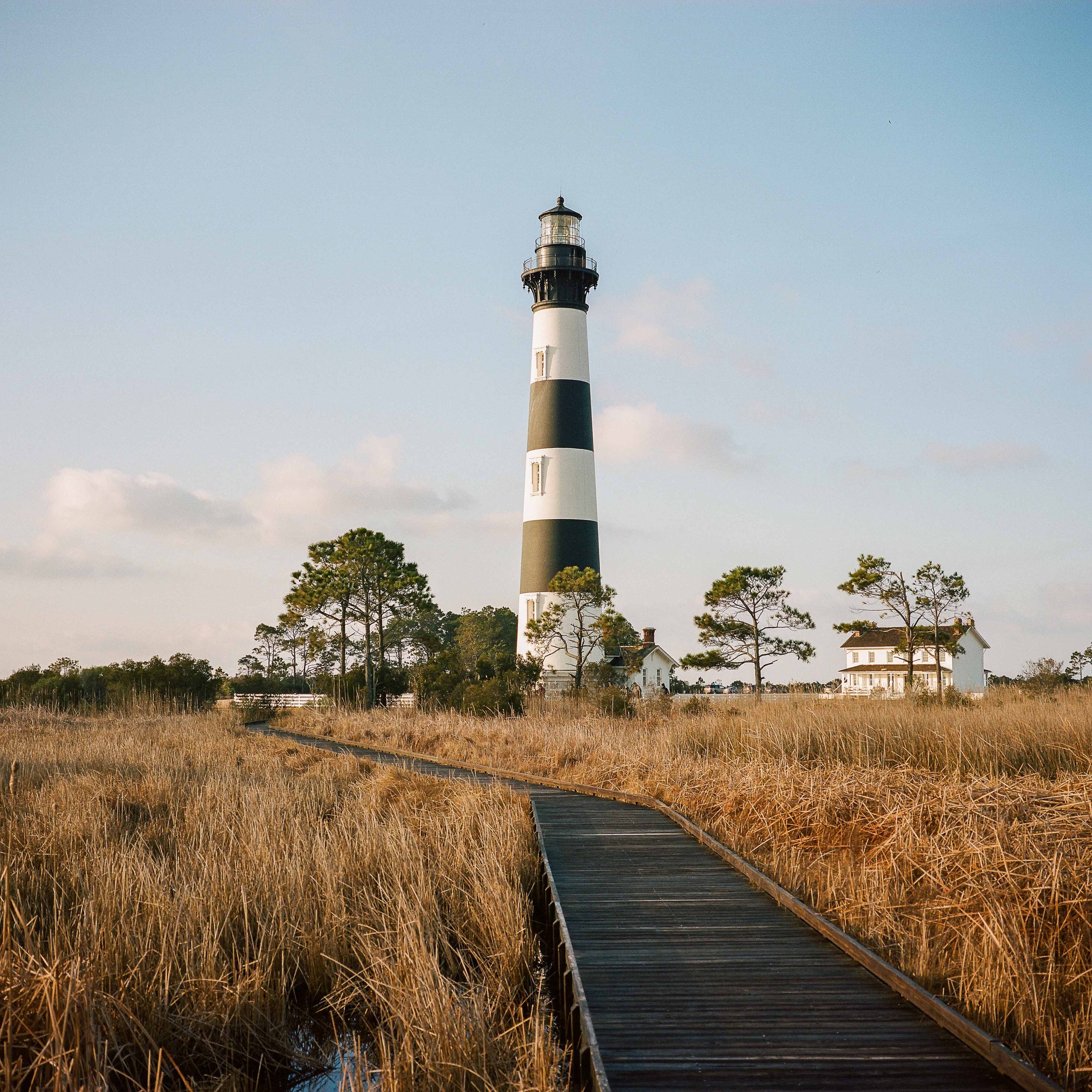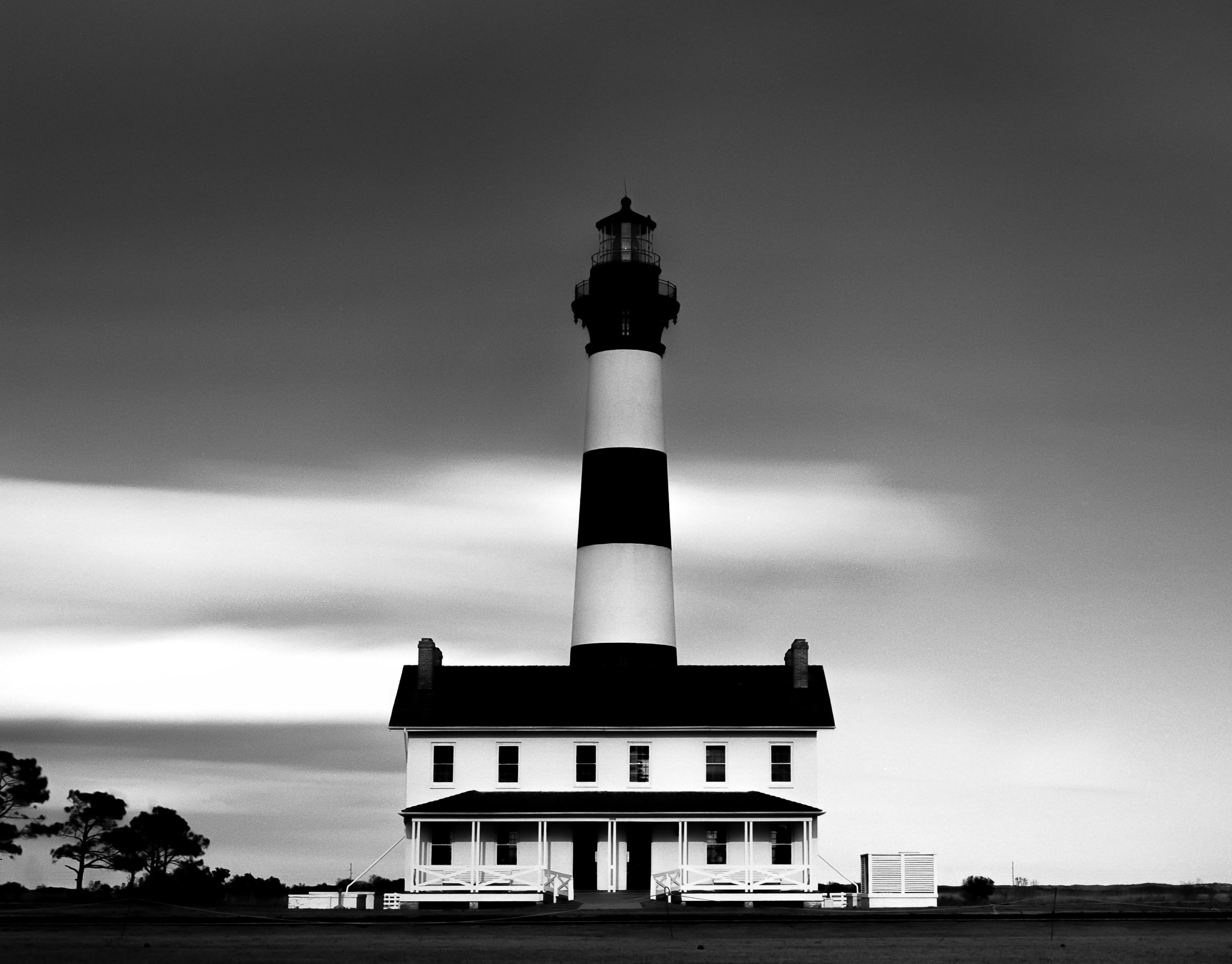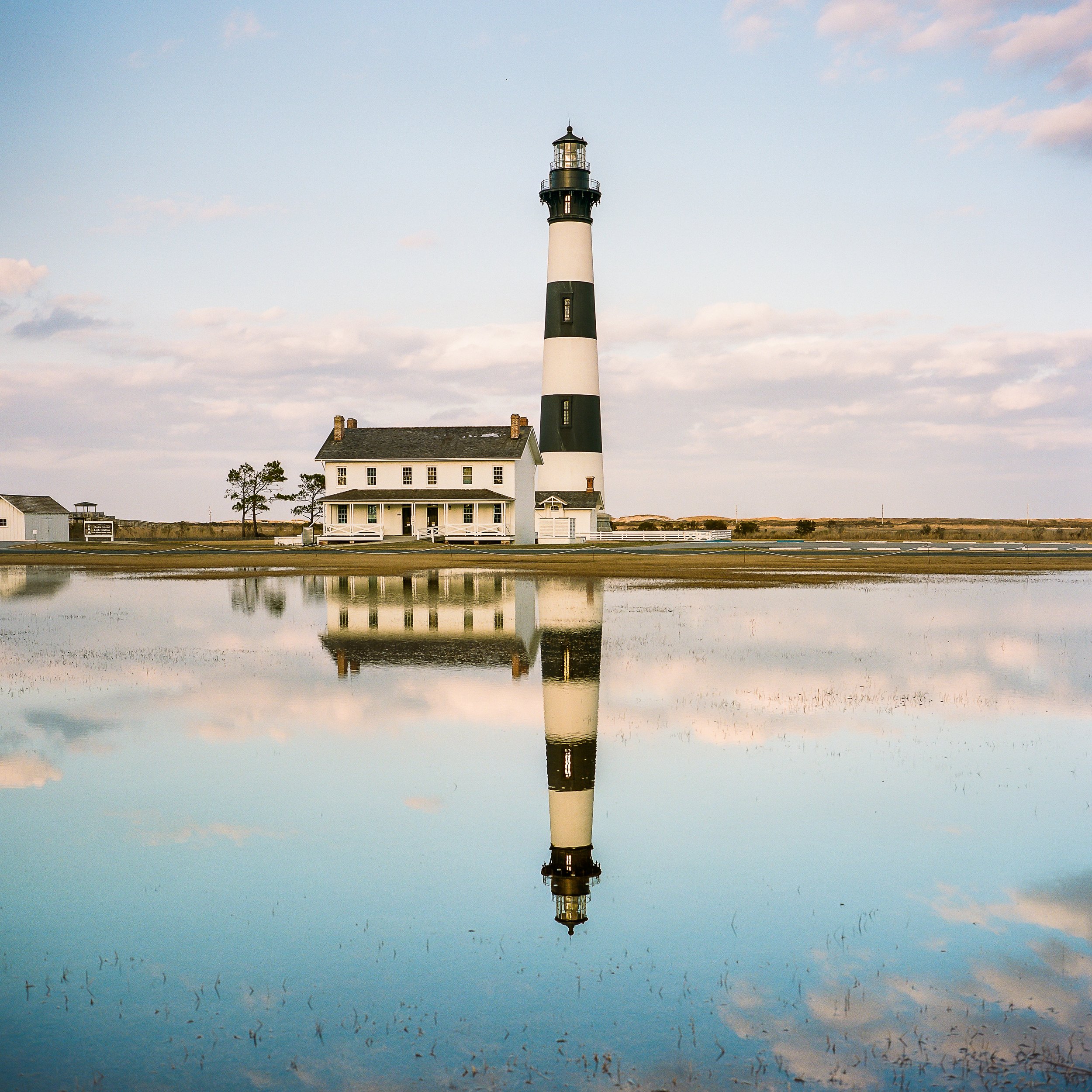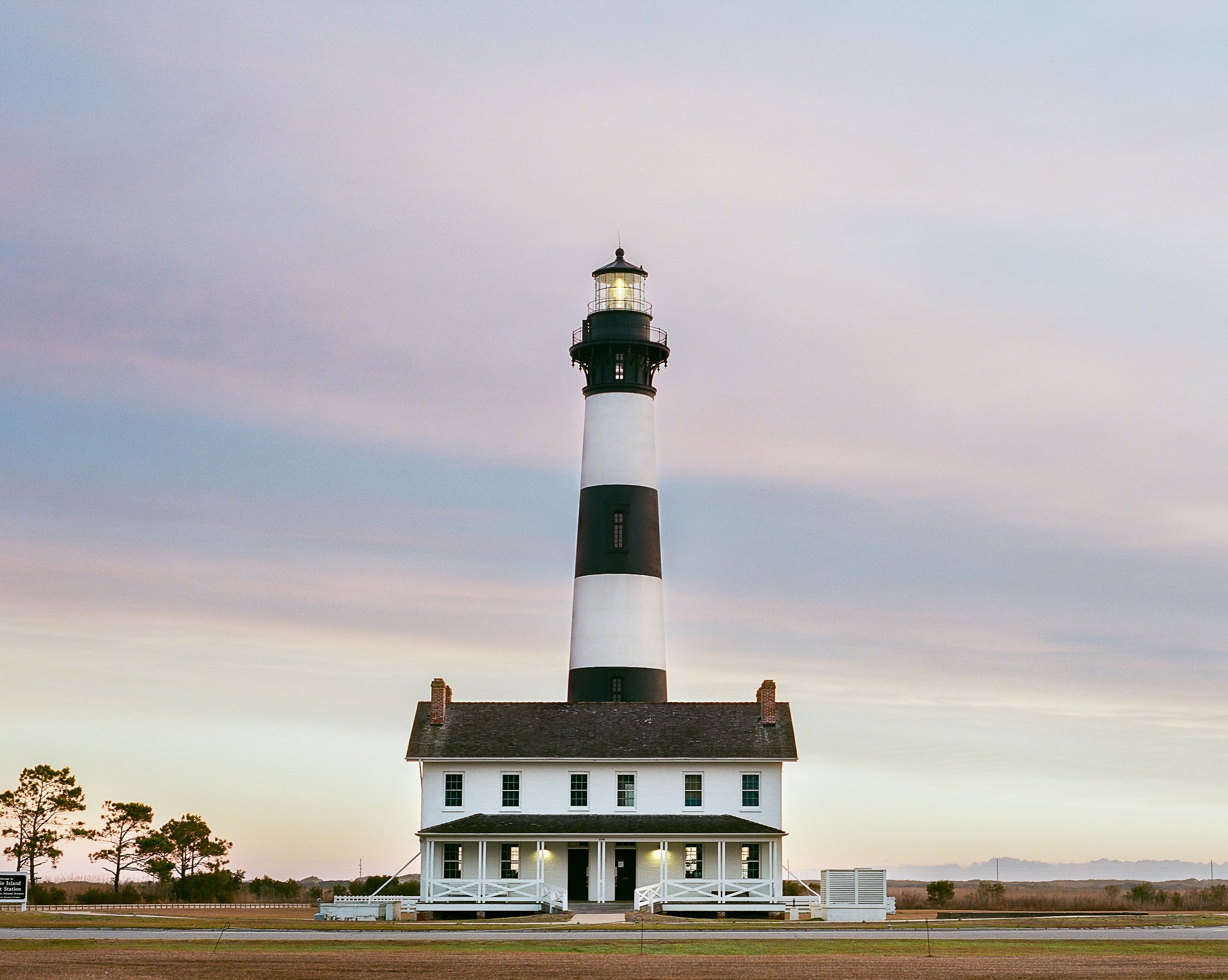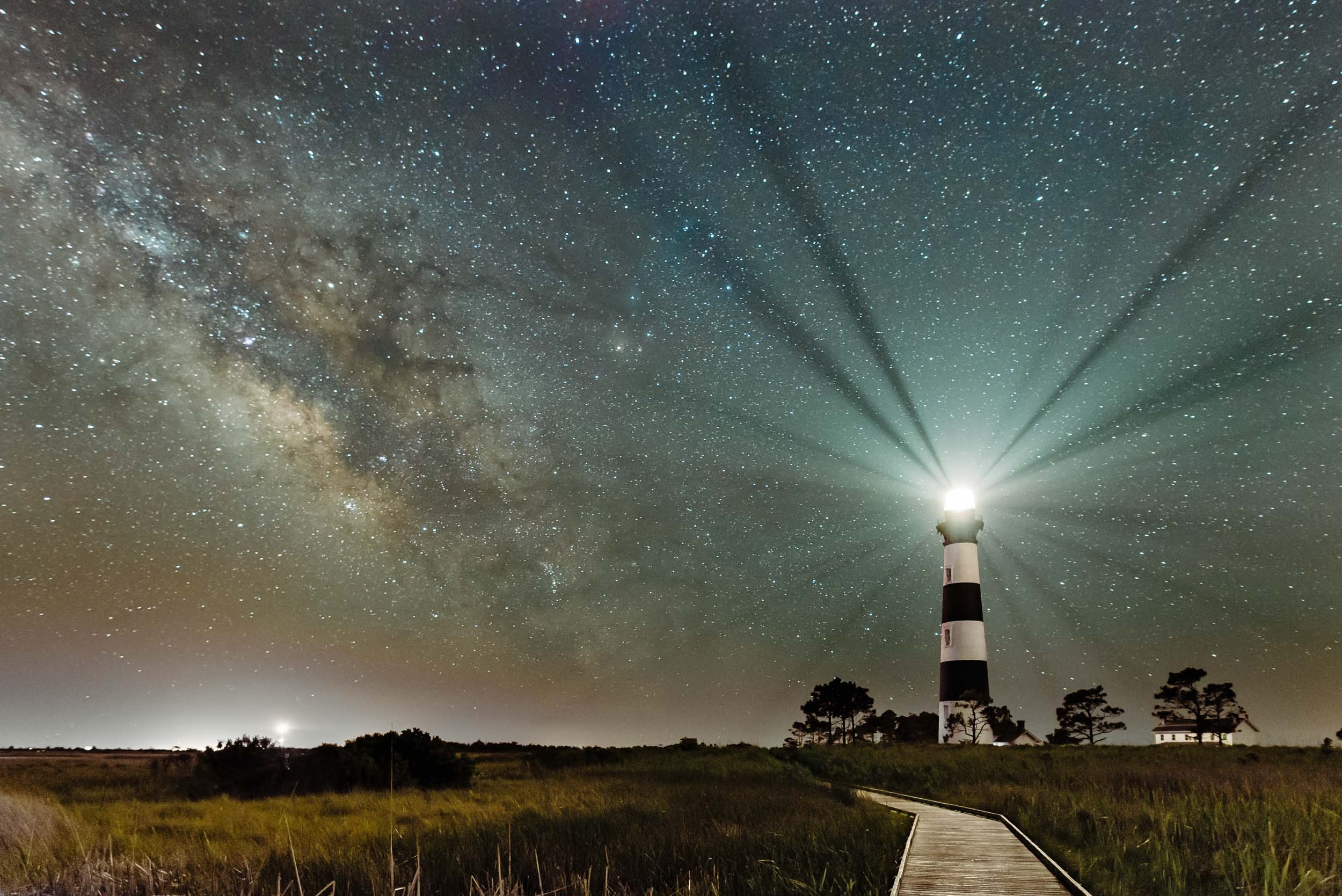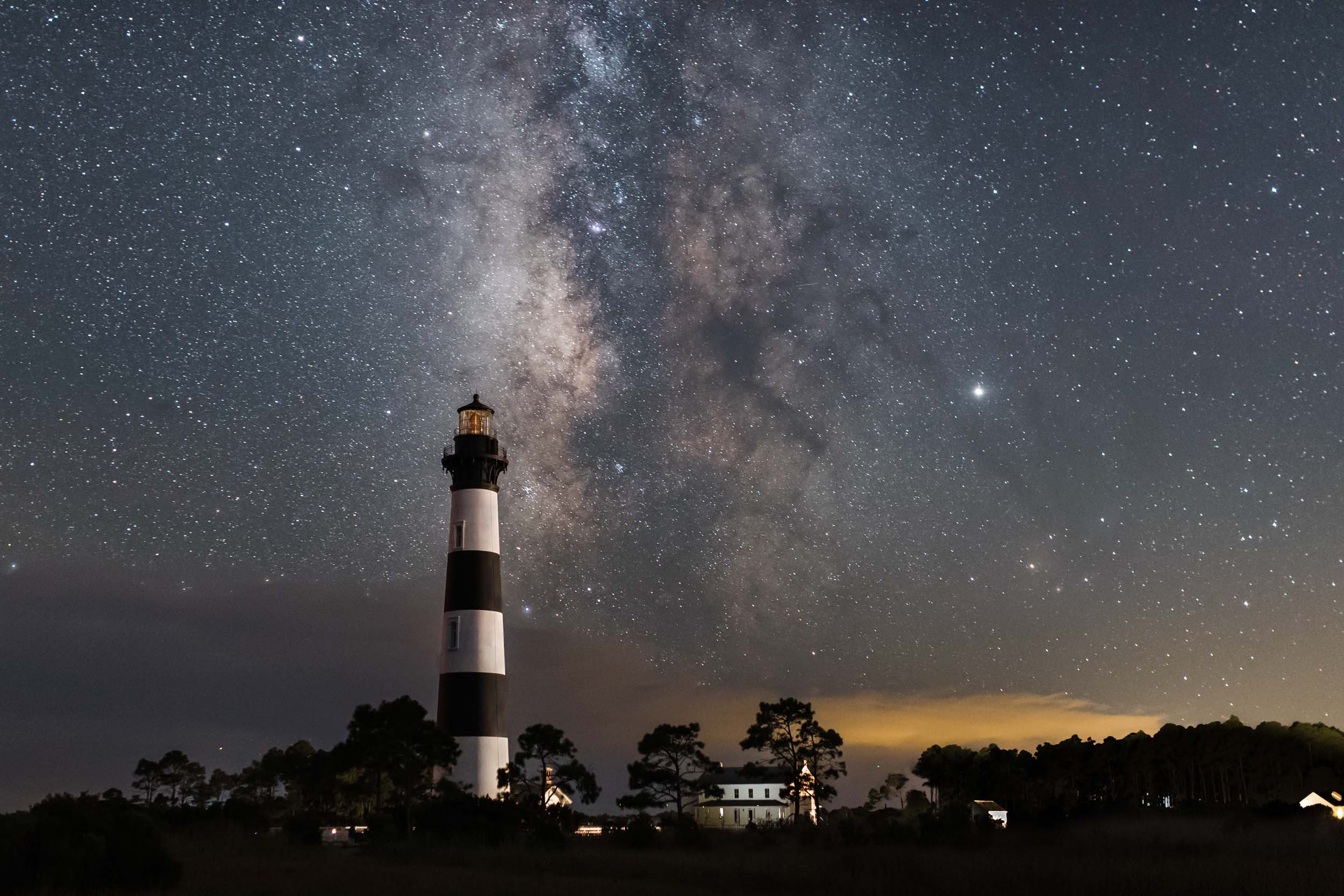Photographing Bodie Island Lighthouse
The Outer Banks of North Carolina is well known for it’s lighthouses along it’s narrow stretch, from the Currituck Lighthouse all the way down the coast to Cape Lookout. The Cape Hatteras light gets most the recognition for it’s height, age, history, and it’s gorgeous spiraling paint job. And that’s all very interesting, but since it’s move in 1999, it became the least photogenic.
This is where Bodie Island stands the tallest (figuratively). From north, south, east and west, the Bodie Island Lighthouse offers amazing views and vast landscapes that it’s easy to get and great photo. Here are some tips on when and where to shoot Bodie Island to get those amazing photos to share with friends and family, including time of year, time of day, focal lengths, and when some of those magical rare scenes can play out.
Location Overview
The Bodie Island Lighthouse has four prime photo locations:
The Birdwatch Tower
The Oval
The Back Porch
Facing North
That’s not to say the rest is garbage. But when it comes to a vast landscape these will have the best views. The birdwatch provides the best angle with the leading lines of the boardwalk heading towards the lighthouse. Facing south, it is ideal for both morning and evening shots.
With all these locations, bring your patience. Being one of the easiest lighthouses to get to, this place has its fair share of tourism. Consider even snagging a few to show the human element of the place, as well as for scale.
And lastly, before we delve into the locations, bring the bug spray. I’m not getting paid to say this, but Ben’s 30% Deet gets the job done here - morning, day and definitely night.
The Bird Watch
As I said above, the birdwatch provides the best view of the Bodie Island Lighthouse as it looks due south. This means sunrises on your left, sunsets on your right. I always grab a 28mm full-frame equivalent and head towards the birdwatch either early in the morning, or late in the afternoon. The rising boardwalk and height of the birdwatch gives you some good elevation to have the boardwalk somewhat below you in your shot. A 50mm lens provides a tight shot of the lighthouse, so you really don’t need anything more than that. If you want to get a tight shot of just the top, a 105mm will get you there. In the afternoons, you can line up on the right side of the birdwatch to capture the boardwalk leading towards the lighthouse and not get the harsh shadow crossing the grass in front of your view (top left photo below). In the mornings, there is a spot on the left-hand side of the birdwatch that will have the boardwalk cutting across your frame (2nd photo below). No matter what, there’s always a good shot from the birdwatch.
Note the variations in the grass colors and the clouds. In the winter months and early spring, the grasses turn a rich golden brown, and the clouds will be thinner, wispy cirrus clouds. As summer approaches, the grasses turn a rich green and clouds change over to puffy cumulous formations.
As you leave the birdwatch satisfied, there are certainly some great low angles as you approach the lighthouse. Snag a few before you round the last bend, and even after you make the turn. Keep it wide, 28mm or so for a great composition.
The Oval
The oval is good for two very specific shots: The symmetry with the main house, and the flooded oval shot. Depending on your taste, the oval is good for either those morning backlit shots, or those afternoon softly lit shots, as you’re facing due east from this location. The best part here is you can shoot with a longer lens and get that compression. I’ll typically use the equivalent full frame lens in the 55-85mm range as you have a lot of space to back up.
The Bodie Island Lighthouse Reflection
This shot deserves its own discussion, because it requires special circumstances to capture. You need rain - lots of rain. If you’re in the Outer Banks and you get one of those super soaker days, keep Bodie Island Lighthouse in your mind. When are those days? Best chance is during the summer storms. The oval will flood and if you’re lucky to get calm winds following the storm, you’ll get a mirror of a pond at your creative disposal. The shot below is with a 50mm equivalent on full-frame in the late afternoon.
The Back Porch
Simply put, I don’t enjoy this shot. But, may other photographers do. It requires a very wide angle lens, so if you’re looking to execute this one, bring something in the 14-24mm equivalent. You are CLOSE. Distortion correction will certainly be required. And you’re going to give that cute little entrance a squeeze as you start to tilt it up. 28mm is as wide as I carry, and both shots here are with that lens. In fact, 2nd shot has a post that crept into the corner of my frame. I hate this shot so much, I didn’t even bother to photoshop it out.
But, wider shots have a better chance to do it justice, like Dave Allen has done HERE.
Facing North
Shots facing north really do need one of those majestic Outer Banks skies to really make the photo stand out. A wider angle is typically best here - 20-35mm is best, in my opinion. Out in this field, the bitey flies can be especially vicious, so if you opted out on the bug spray recommendation above, it may be best to steer clear of this spot.
Bodie Island Lighthouse at sunrise
Bodie Island Lighthouse at sunset
Milky Way
When it comes to star chasers, Bodie Island Lighthouse is one of the biggest draws for Milky Way shooters. The extremely dark skies to the south and east make it one of the best locations on the east coast. The time of year is extremely important though, as you get extremely limited in compositions and even the time you can shoot it. The photo on the left below was shot on May 27th at 1 am. The photo on the right was shot on August 30th at 10:30 pm. By the time the sun sets in late August, the core is much higher in the sky, and doesn’t give you the best compositions. Early in the season, the Milky Way sits off to the east, which gives you multiple locations to shoot the Milky Way. If you’re coming to the Outer Banks for Milky Way, do it early in the season (April-June) for the best conditions!
You will get murdered by mosquitoes here if you do not come prepared. One more pitch for Ben’s 30% Deet as nothing short of a mosquito net will save you. Covered head-to-toe: pants, long socks, shoes, long-sleeved shirt, hat, even a pair of thin gloves will save your hands. And , or you’ll be reliving this night of horrors for years.
The Bodie Island Lighthouse has a flashing pattern that will give the light ray affect through it’s supports as you see below. The light turns on for 2.5 seconds, then off for 2.5 seconds, then on again for 2.5 seconds, and then finally off for 22 seconds. I try to catch just a single flash to not blow it completely out. For Milky Way and the 500 rule (divide 500 by your focal length to get your maximum shutter speed before stars trail), I prefer wider angles so I can expose for longer. The shot on the left is 20mm lens from the boardwalk just before the birdwatch; the shot on the right is with a 35mm lens from the birdwatch.
Bodie Island Lighthouse Milky Way Panorama
Star Trails at Bodie Island Lighthouse
Star trails out at Bodie can be a very peaceful night. The best time of year for this is during the winter months as there’s no moisture in the air and you’ll get clear, crisp shots. The popular shot is from the field facing north, so that you can align Polaris directly above the lighthouse. The lighthouse does tend to need a bit of light painting from this angle, as there are no lights from the south reflecting off of it. Since Nags Head is also just about 7 miles north, there is quite a bit of light pollution, but not enough to ruin the shot.
Facing south though from the birdwatch also provides a great view, and gives the stars much longer arches across the sky. The lighthouse will light the boardwalk and light pollution from Nags Head behind you puts enough light on the lighthouse itself that no additional light painting is needed.
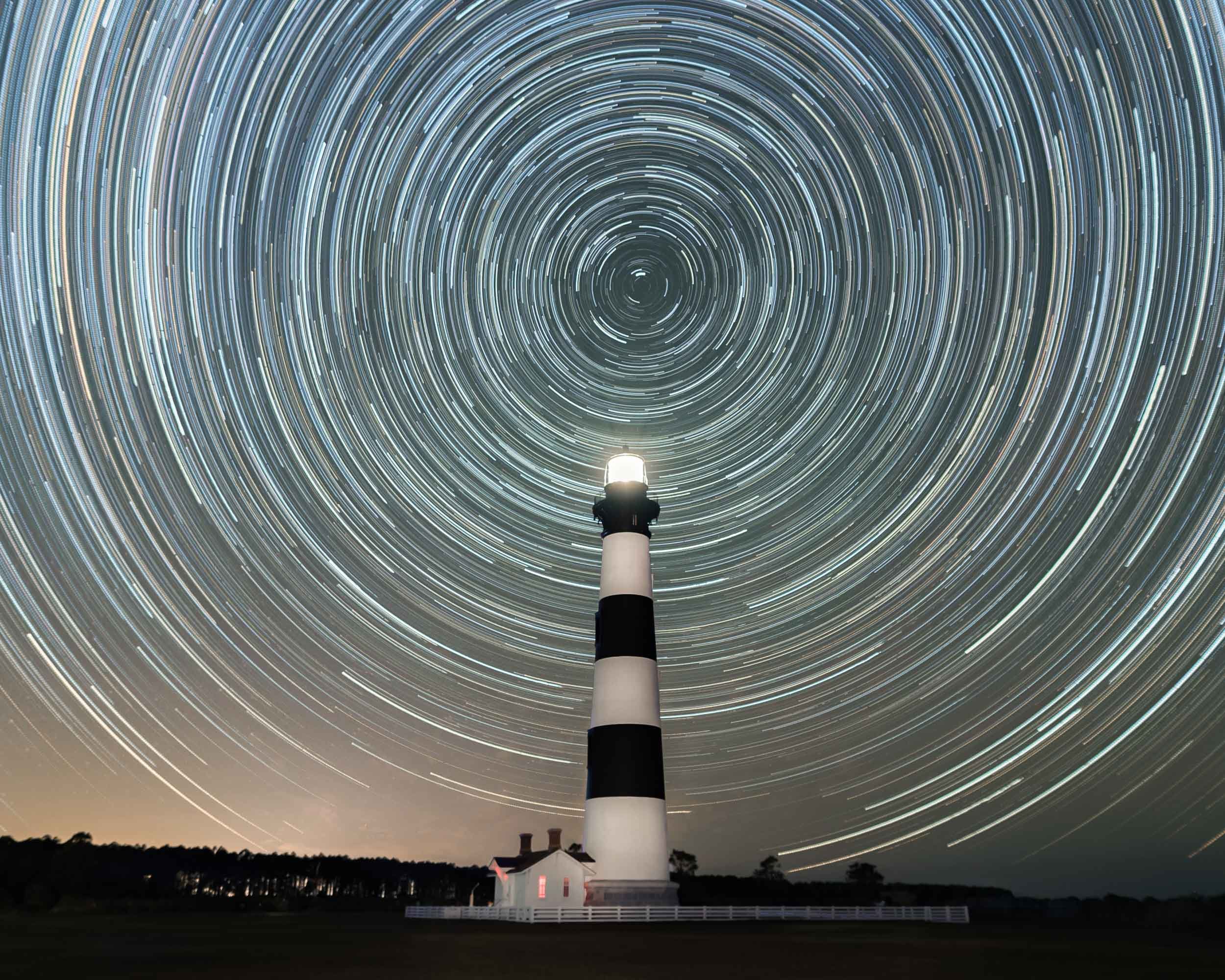


Enjoy the OBX!
I hope you enjoy your time in the Outer Banks, and make the most of Bodie Island. You can easily make multiple trips, both morning, evening, and night during a single vacation. I’ll be doing following up with my most favorite location in the Outer Banks - the Pea Island Life Saving Station, easily the best kept secret in the Outer Banks.



